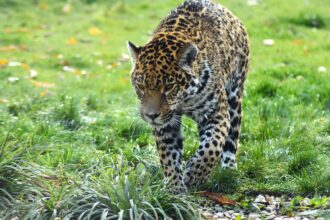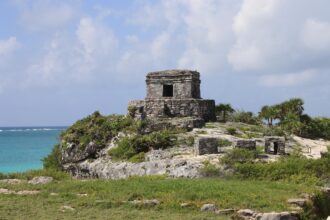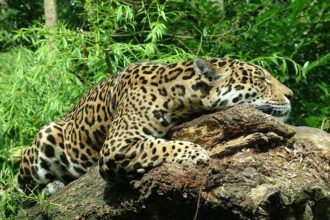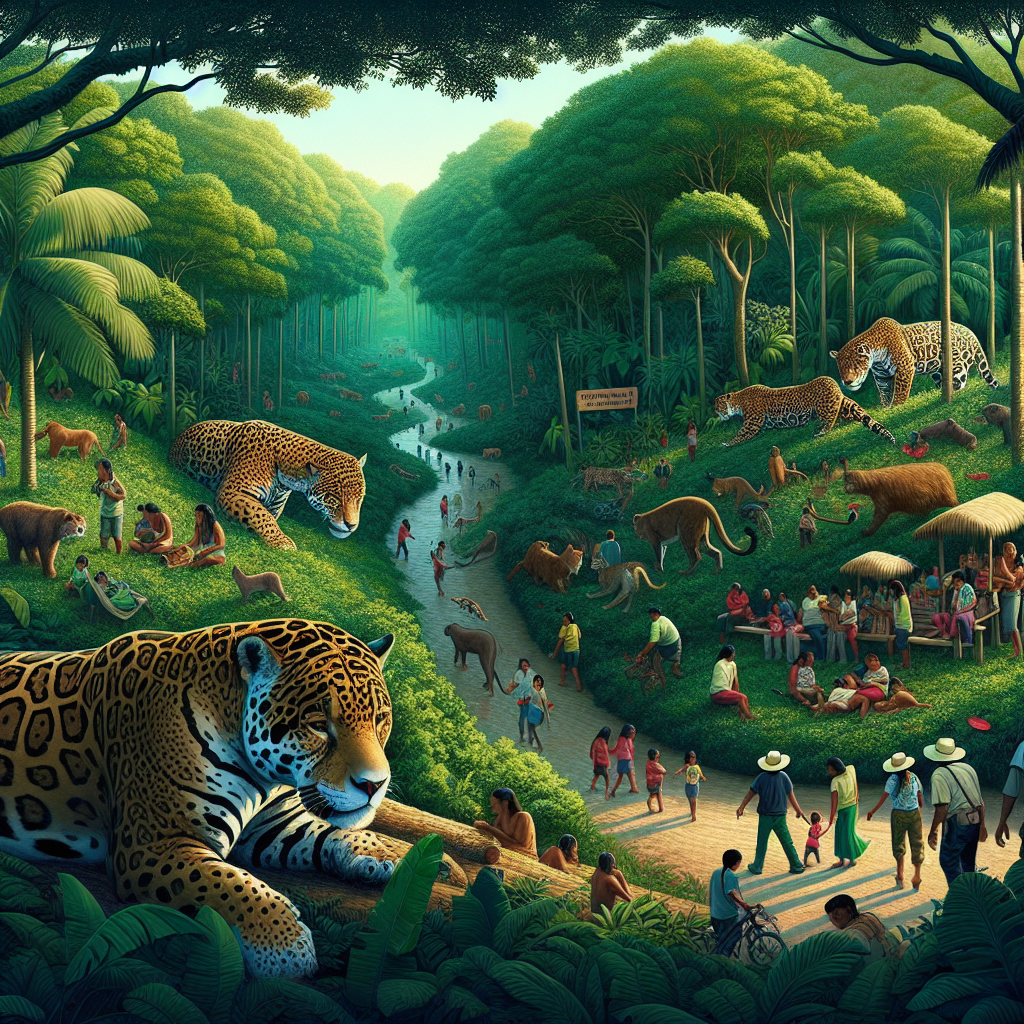The Impact of Jaguar Protection Programs on Local Communities
Overview of Jaguar Protection Programs
Jaguar protection programs are essential initiatives aimed at conserving the jaguar (Panthera onca) population, which is critical for maintaining ecological balance in their habitats. These programs often involve collaboration between governmental agencies, non-governmental organizations (NGOs), and local communities to create sustainable practices that benefit both the jaguars and the people living in their vicinity.
Economic Benefits
One of the most significant impacts of jaguar protection programs is their effect on local economies. Ecotourism emerges as a primary advantage, where local communities can capitalize on the presence of jaguars to attract tourists. Tourists are drawn to regions where they can observe these majestic animals in their natural habitat, leading to increased revenue from park fees, guided tours, and local accommodations. For instance, in Costa Rica, the establishment of jaguar protection zones has resulted in an estimated increase of 25% in ecotourism revenue, providing locals with jobs and financial opportunities that were previously unavailable.
This influx of ecotourism stimulates small businesses, including restaurants, artisan markets, and transportation services. When communities recognize the direct financial benefits of conservation, their incentive to protect jaguars and their habitats increases, fostering a sense of ownership over conservation efforts.
Community Involvement and Empowerment
Jaguar protection programs promote community involvement, encouraging locals to participate actively in conservation efforts. These initiatives often incorporate training workshops and educational outreach to inform the community about the ecological importance of jaguars. By involving local populations in monitoring and protecting jaguar habitats, programs instill a sense of pride and responsibility.
Communities that previously viewed wildlife as a threat to their livestock or crops can develop a more positive perspective. Education initiatives inform locals about the role of jaguars in controlling prey populations and the broader ecosystem, which ultimately helps reduce conflicts. Empowering local communities through education fosters leadership skills and creates a sense of unity as residents work collaboratively towards common goals.
Cultural Significance and Identity
In many indigenous cultures, jaguars hold significant symbolism and cultural weight. Jaguar protection programs recognize and respect these cultural perspectives, integrating local traditions into conservation strategies. By acknowledging the jaguar’s role in local mythology and its importance to indigenous identity, these programs help strengthen cultural ties and encourage community support for conservation efforts.
Offering platforms for local communities to share their stories and experiences related to jaguars ensures that these conservation efforts are culturally relevant. This cultural integration not only enriches the conservation narrative but also helps ensure that these programs are sustainable over the long term.
Conflict Mitigation
Human-wildlife conflict remains a significant challenge in conservation, particularly in areas where agricultural activities overlap with wildlife habitats. Jaguar protection programs commit to minimizing these conflicts through compensation schemes and alternative livelihood initiatives. For example, when a jaguar preys on livestock, local farmers can receive compensation to mitigate financial loss.
Moreover, programs often support the implementation of non-lethal predator deterrents, such as guard animals or innovative fencing solutions, which help safeguard livestock without harming jaguars. These interventions alleviate the financial burden on local farmers and foster a more positive relationship with jaguars, reducing retaliatory killings.
Biodiversity and Ecosystem Health
Jaguar protection has broader environmental implications, as jaguars are apex predators that play a crucial role in regulating the ecosystem. By maintaining healthy populations, jaguars help control herbivore numbers, which can prevent overgrazing and encourage diverse vegetation growth. Local communities benefit from healthy ecosystems that support agriculture, fisheries, and other resources that sustain their livelihoods.
When biodiversity thrives, it enhances ecosystem services such as clean water, pollination, and nutrient cycling, which are vital for community well-being. By prioritizing jaguar conservation, these programs indirectly contribute to enhancing the overall quality of life for local residents.
Partnerships and Collaboration
Successful jaguar protection initiatives rely on effective partnerships and collaborations among various stakeholders, including local communities, government agencies, researchers, and NGOs. These partnerships are foundational, allowing for shared resources, expertise, and innovative solutions to emerge.
Collaboration fosters transparency and builds trust, ensuring all parties have a stake in the success of the programs. Additionally, community members can share their localized knowledge, which can inform more effective conservation strategies tailored to specific ecosystems. This synergy ultimately leads to more resilient conservation efforts that benefit both people and wildlife.
Technological Innovations
Technological advancements play a crucial role in the effectiveness of jaguar protection programs. Remote sensing, camera traps, and GPS collaring have revolutionized data collection and monitoring efforts, providing insight into jaguar populations, behaviors, and movements. By engaging local communities in data collection efforts, technological innovations also empower residents to be active participants in conservation work.
Moreover, apps and digital platforms that report wildlife sightings or conflicts not only enhance data accumulation but also enable swift responses to potential issues. By marrying technology with grassroots involvement, these programs lay the groundwork for creating sustainable conservation practices that evolve with community needs.
Health and Well-Being
The success of jaguar protection programs can have positive effects on the physical and mental well-being of local communities. Engaging with nature, whether through ecotourism or conservation work, has been linked to improved mental health outcomes. Communities that take part in jaguar conservation often report enhanced social cohesion and collective identity as they work together toward a shared goal.
Additionally, by maintaining robust ecosystems, jaguar protection programs help ensure that local communities have access to clean water and natural resources that are integral to their health and nutrition. Healthy ecosystems contribute to overall public health and can reduce the prevalence of diseases linked to environmental degradation.
Case Studies
Several case studies illustrate the profound impact of jaguar protection programs on local communities. In Brazil’s Pantanal region, a collaborative jaguar conservation effort, the “Great Jaguar Project,” involves landowners, indigenous groups, and conservation organizations. This multi-stakeholder approach has not only led to increased jaguar sightings but has also provided livelihood alternatives, such as eco-friendly ranching practices that allow cattle and wildlife to coexist.
In Argentina, the Yaguar Conservation Project has worked closely with rural communities to develop community-led monitoring strategies and ecotourism initiatives. Residents who were once skeptical of jaguar conservation have become advocates, leading tours and educating visitors about the importance of preserving these apex predators and their ecological role.
By harnessing community engagement and addressing local needs, these case studies exemplify the positive outcomes that can arise from focused conservation efforts.
Conclusion
The impact of jaguar protection programs on local communities is multifaceted, intertwining economic benefits, cultural identity, conflict mitigation, and ecosystem health. By fostering collaboration and empowering community involvement, these initiatives serve as powerful tools for true sustainable development. The collaborative nature of these programs highlights the deep connection between large predators like the jaguar and the cultures and economies that coexist with them. Ultimately, the protection of jaguars is a testament to the enduring relationship between humans and nature, reinforcing that conservation can yield tangible benefits for local populations.







